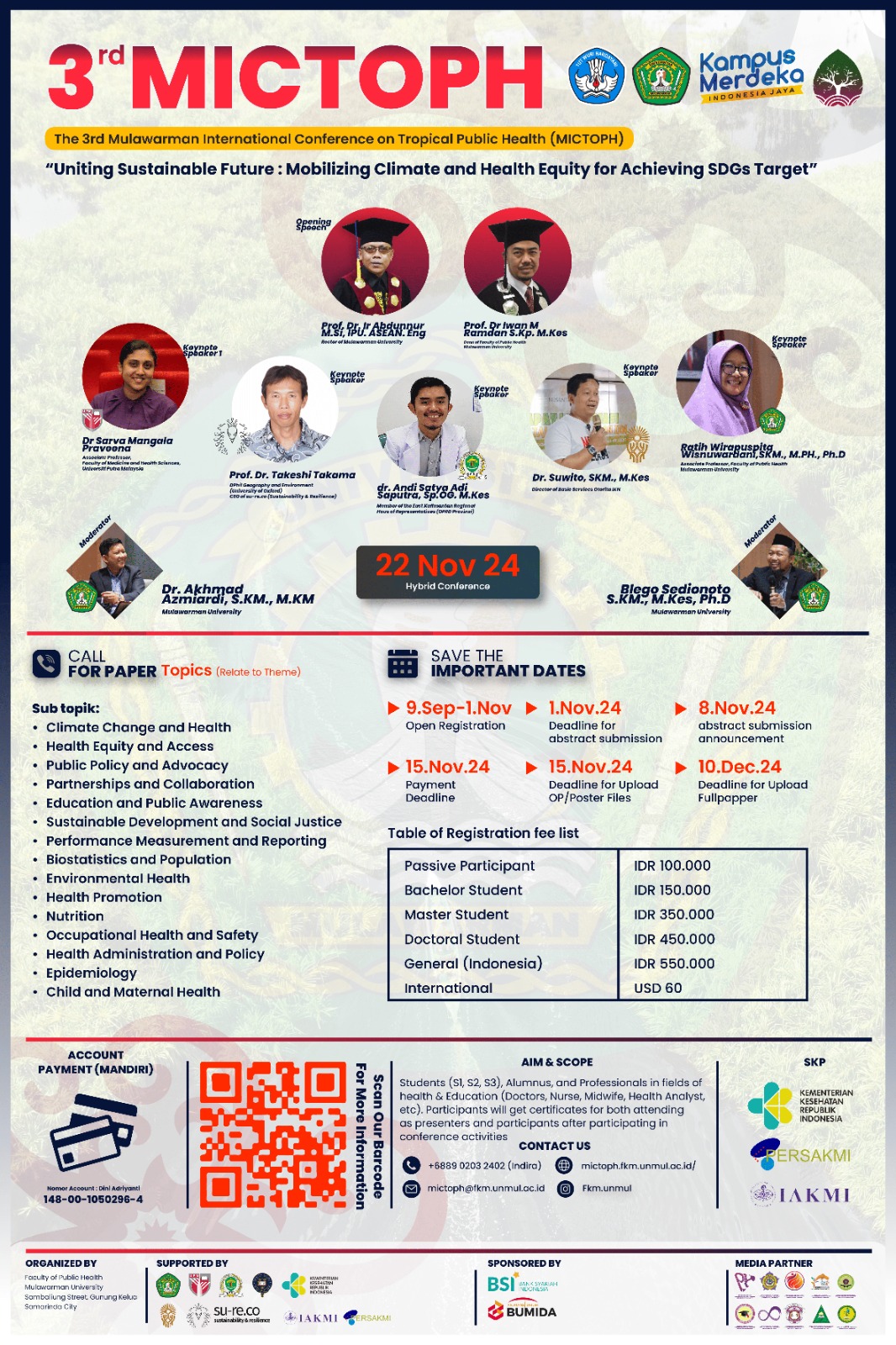Epidemiological Study of Chikungunya Outbreak in Kapanewon Imogiri Bantul Indonesia, April to May 2024
Keywords:
Chikungunya, case-contro study, outbreak response, vector controlAbstract
Background : On 6 May 2024, the Bantul District Health Office and Field Epidemiology Training Program (FETP) identified a cluster of Chikungunya-like illnesses in the Imogiri I Public Health Center area.
Objective : Prompting an investigation to confirm the outbreak and identify risk factors.
Research Methods : We conducted a 1:1 unmatched case-control study design. Cases were individuals with fever and arthralgia, with or without positive chikungunya lab results, living in Garjoyo and Karangtalun, Imogiri Sub-district. Controls were healthy residents in the same neighbourhood. Data on demographics and risk factors. Were collected through standardized questionnaires. Blood samples from 5 to 10 individuals per hamlet were tested using a Rapid Diagnostic Test (RDT). Logistic regression analyzes significant factors.
Results : We identified 86 suspected cases, resulting in an attack rate (AR) of 8.53% from a total population of 1008. 172 individuals were interviewed, comprising 86 cases and 86 controls. The highest AR was observed among females (60.92%) and in RT 03 KarangTalun (72.1%). Primary symptoms included fever and arthralgia (91.86%). The larval-free index in both villages was below 95%, with the lowest index in KarangTalun RT 03 (15.4%). Out 23 RDT samples, 12 confirmed Chikungunya (52.17%). Multivariate analysis indicated that lower income (OR=1.97, 95% CI:0.85- 3.09) and the presence of mosquito larvae (OR=1.81, 95% CI:0.41-3.20) significantly increased infection risk.
Conclusion : The Chikungunya outbreak in Kapanewon Imogiri from April to May 2024 was linked to environmental and socioeconomic risk factors. These findings highlight the need for targeted public health interventions and proactive vector control.





